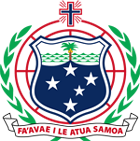On Thursday, August 22, 2024, the MNRE received an alert from the Samoa Water Authority’s Vaitele office reporting a suspected mongoose sighting in their compound. Recognizing the potential
threat to Samoa’s ecosystem, the MNRE-DEC team quickly mobilized, collaborating with the Secretariat of the Pacific Regional Environment Programme (SPREP) Pacific Regional Invasive
Species Management Support Service (PRISMSS) for technical advice and equipment.
By 6:48 pm the same day, the team successfully captured a large mongoose, suspected to be female.
Further investigation is underway to confirm its sex and species.
The Ministry would like to emphasize the gravity of the situation. Mongoose have led to the extinction of ground-nesting birds worldwide and pose a significant threat to Samoa’s fragile ecosystem. Our native birds, the Pacific Boa, other reptiles, and even sea turtle eggs could be at risk if mongoose were to establish here. The Ministry in collaboration with key partners is committed to preventing this invasive species from gaining a foothold in Samoa.
We would like to assure the public that efforts to locate and capture any other mongoose will continue.
The pathway by which this mongoose entered Samoa remains under investigation.
Mongoose are small carnivorous mammals known for their long faces and bodies, round ears, short legs, and long tapering tails. They are often transported inadvertently via shipping containers and vessels.
The MNRE extends its gratitude to the SWA team for their prompt reporting and to SPREP-PRISMSS for their valuable support. The Ministry calls on the public, especially residents in the Vaitele area, to remain vigilant and report any mongoose sightings or unfamiliar animals to MNRE at +685 67200.
Let us work together to keep Samoa mongoose-free and protect our precious biodiversity.


